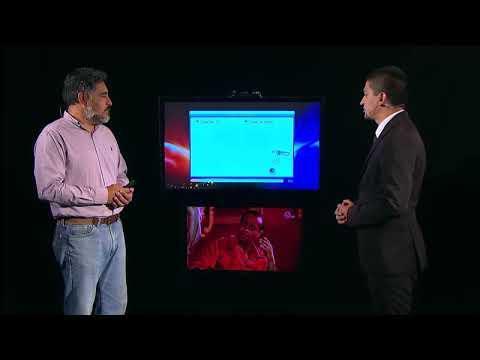(MENAFN- Costa Rica News) advertisement
Digital television, in its numerous presentations, operates based on the use of the electric radio spectrum or the physicalmeans of connectionto transmit much more information than was done analogically, by image and sound coding mechanism that enhance the quality of reception speed. Thus, the available bandwidth is used to transmit numerous packets of compressed information, instead of an uncompressed signal that occupies it all.
A
flow of up to 20 Mb can contain 4 or 5 different programs on a single
transmission channel, without the delay of information from the device to the
operator. For this, the only necessary addition to ordinary televisions is a
decoder, which interprets and decompresses the given packages and recovers the
signal directly to the display device.
It
is a television revolution that began in the early 21st century, through the
international adoption of DTV standards in the different continents of the
planet as the countries and the companies providing these types of services
moved towards overcoming of the analog system.
There are several types of digital television:

a)
Open (broadcast or free).
It
is issued through700Hz frequencies of the radio spectrum freely to all
televisions compatible with digital TV or equipped with a specialized encoder.
b) By cable.
It identifies television by traditional cable, except
that the signal transmitted by the coaxial cable is digital.
c) IPTV.
The television protocol allows the transformation of
digital television by the twisted pair of copper used in the telephone line
such as the ADSL.
d) Satellite.
The one whose digital signal is sent via satellite to
each of the antennas located in buildings and homes such as ordinary satellite
television.
Characteristics of digital television.
1)
It accepts several formats: Television can be transmitted in different
resolutions from 480, 576, 720 or 1080 pixels both progressive and interlaced,
as well as HD (high definition). This represents substantial and simultaneous
transmissions signals. The bandwidth of the transmission can be subdivided to
transmit different programming on various devices, in what is called multiplex
technology.
2) It allows interactivity: Digital television allows
the sending of information from home to the station and not just its reception.
So it turns the device into an interactive experience. This occurs through both
public and private text messages.
3)
It has different standards: Each adapted for a specific geographical area, such
as ISDB –TB, DVB-T2 / H or ATSC. Image improvement.
The presence of digital television in Costa Rica is NOW.
The
beginning of the era of digital television in our country began this month when
the analog signal was turned off to give way to the digital signal. Free and
open television in our country faces an important change which is to leave
behind the analog signal and thus take a great step towards the new digital
format.
The analog blackout will allow users to move on to a
new way of watching television since it has many possibilities for viewers to
have more programming through the same channel, as well as image and sound in
high definition, viewers will also have an interactive guide, among others
functions.
The change will leave behind the NTSC format to give
way to the format that has been called the Japanese–Brazilian (ISBT-Tb) thanks
to the characteristics of this transmission system and according to the
analyzes performed, it is the one that best adapts to the geographic conditions
of our country. The data revealed by the Ministry of science, technology, and
telecommunications which indicated that the blackout will be progressive in the
country.
New technological opportunity for the country.

To receive this new signal in your homes there are two
options:
If
you already have a television in your home you can check that it supports the
ISCB-Tb signal. In case it does not, you can purchase a special kit which the
function of converting the signal.
For its part, the Mixed Institute of Social Assistance (IMAS) provides families in extreme poverty with a digital television converter. If you have asatellite signal or through a cable operator, you should not do anything since the signal is received directly through these intermediaries.
It is important to mention that the signal will now depend on three factors. The quality of the synchronizer, the antenna and the way the television is broadcasted, since the greatest benefit of digital TV, will depend on how the channels use digital equipment throughout the transmission process. It is estimated that the whole country will have transited to digital television completely before 2020.

MENAFN1111201902160000ID1099253398
Legal Disclaimer:
MENAFN provides the information “as is” without warranty of any kind. We do not accept any responsibility or liability for the accuracy, content, images, videos, licenses, completeness, legality, or reliability of the information contained in this article. If you have any complaints or copyright issues related to this article, kindly contact the provider above.